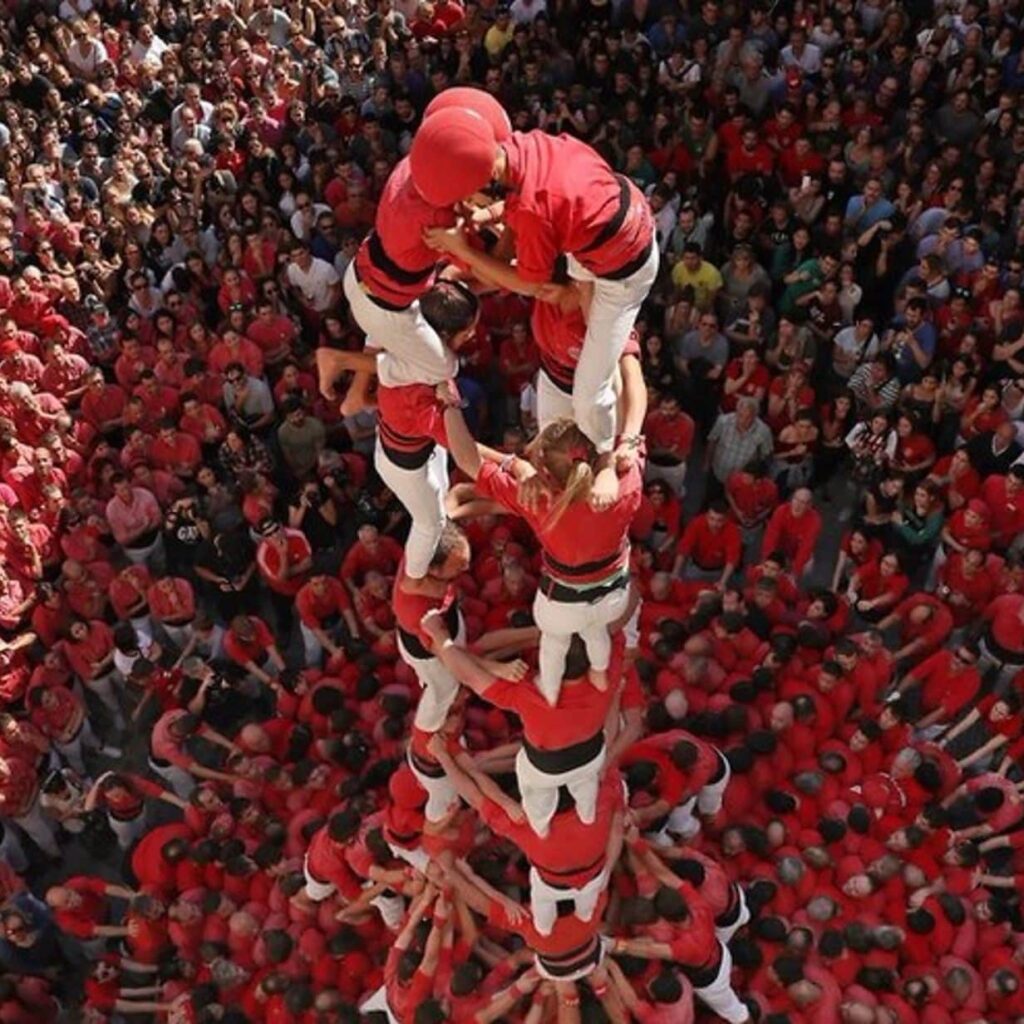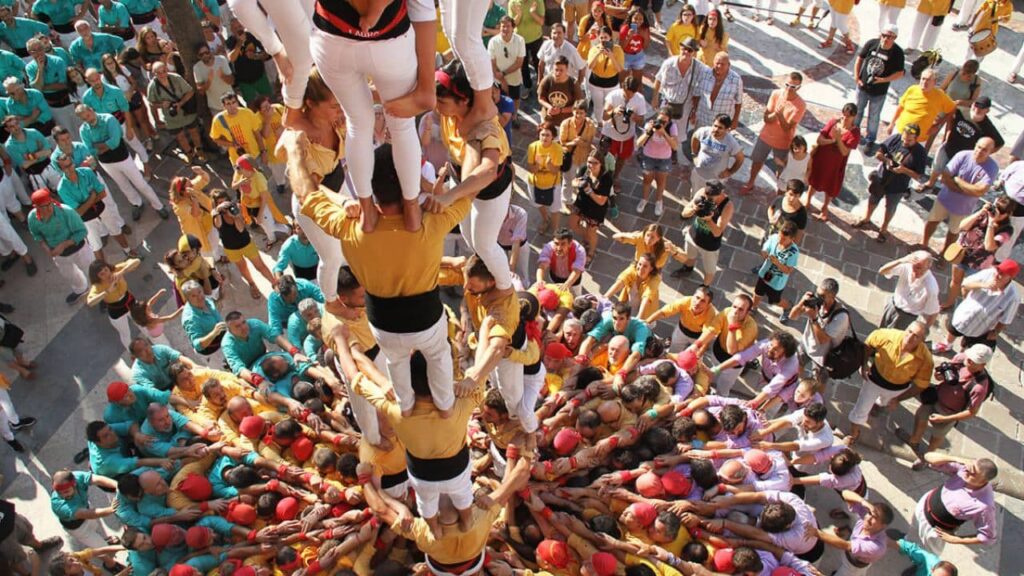Castellers: Catalonia’s Human Towers
Hey there, fellow adventure seekers! Today, I’m taking you on a journey into the heart of Catalonia, Spain, where we’ll explore a tradition that embodies strength, balance, courage, and sound judgment while fostering a profound sense of community spirit. I’m talking about the awe-inspiring human towers known as ‘castells.’
Picture this: a towering structure, six to ten people high, rising against the backdrop of bustling Catalan cities and town squares. These incredible feats of human engineering date back to the late 18th century in the Camp de Tarragona region of Catalonia. Since then, they’ve spread like wildfire across the region and even beyond.
Catalonia’s Collaborative Castellers:
Each Catalonian town boasts its Castellers teams, but don’t expect these performances to be cutthroat competitions. It’s not about outdoing one another but pushing their limits and conquering new challenges. The big matches, like the biennial ‘Castells de Tarragona,’ are more of a rare treat than the norm.
Suppose you ever find yourself lucky enough to witness a Casteller performance. In that case, there are a few unwritten rules to remember, even though you won’t find a rulebook for human towers anywhere. Each version typically involves three teams, each constructing three human buildings and a farewell pillar. These towers have names that reflect the number of levels and castellers per level, like ‘4 out of 9.’ A minimum of 6 classes is needed to qualify as a castle, except for the pillar, which can have four levels.
And speaking of levels, each part of the tower, including its brave souls, has jargon. There’s the base, which provides the crucial support. Then comes the trunk, crowned with a dome. You might spot a cover or auxiliary base and shackles in the higher towers to reinforce the structure.

At the top of it all is the crowner, and when that fearless soul raises their arm, it’s time for thunderous applause from the audience. But make no mistake; this doesn’t happen overnight. Castellers practice relentlessly, and every member has a specific role, with children often taking up the topmost positions, safely protected by helmets.
Here’s the kicker: the lower you are in the tower, the harder it is to see what’s happening. So, music comes to the rescue, guiding the construction process. Instruments like the gralla, a traditional Catalan wind instrument, and drums set the rhythm and mark the stages of the tower’s ascent.
And yes, sometimes these incredible human creations come tumbling down, and they call that ‘making firewood.’ But fear not! Castellers are trained not just to succeed but also to fail safely. They learn how to manage falls and minimize injuries.
But here’s the thing: the ultimate success isn’t just in building the tower; it’s in the controlled dismantlement. When a castell comes down without a hitch, it’s a cause for celebration, with teams congratulating one another on their triumph.
Now, let’s talk about the dream teams behind these castells. They’re not just about the performance; they reflect their communities. These teams can have anywhere from a hundred to a thousand members, managed by a leader. And here’s a fun fact: while women didn’t join in on the action in a big way until the 1980s, they’re now an integral part of Castellers teams.
Team names usually pay homage to their place of origin, like ‘Xiquets de Valls,’ ‘Marrecs de Salt,’ or ‘Castellers de Barcelona.’ And when it comes to costumes, they’re a big deal too. Each team rocks their proprietary colour shirt, often in red, blue, or green shades. They even use different shades like they’re working from a Pantone chart to avoid any mix-ups.
The ensemble comprises white trousers, a black waist sash, and a red polka dot bandana. These aren’t just for style; they serve multiple functions, from protecting wrists to keeping hair in check and providing shade on sunny days. And let’s not forget the chest badges, sealing the deal on team identity.

So, there you have it, a glimpse into the captivating world of castells in Catalonia. With 104 teams raising around 10,000 human towers a year, these towering spectacles mark unique ceremonies and celebrations, like the tribute to the legendary artist Salvador Dalí in his hometown of Figueres.

And if you ever find yourself in Girona, you might catch the Marrecs de Salt team, who’ve kept the tradition alive during local events, especially the Sant Narcís Fair in late October since 1997.
So, next time you’re in Catalonia, keep your eyes peeled for these incredible human towers, and remember, it’s not just about reaching the top; it’s about the journey, the community, and the unbreakable spirit that makes Castells genuinely extraordinary.


